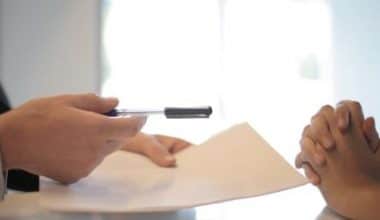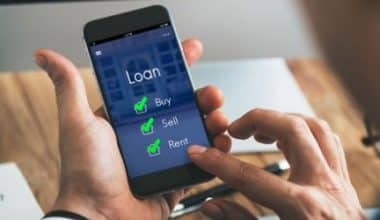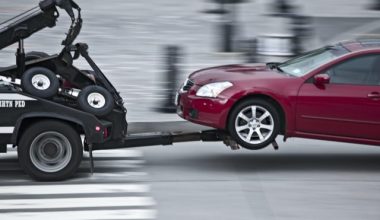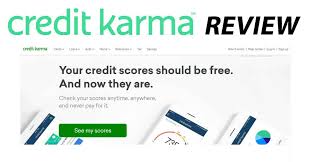Business paper checks are on the decline across the country. Paper checks were used in 42.6 billion transactions in 2000. In 2018, that figure dropped significantly to 14.5 billion. Some estimates claim that businesses lose between $4 and $20 per check cut, mailed, and processed within their network. Surprisingly, paper checks remain the primary method of payment for 50% of businesses. Paper checks are expected to become obsolete by 2026, according to the Federal Reserve Bank of Philadelphia. Let’s look at what personal checks and business paper checks are from the IRS, as well as how to order a paper check.
What are Business Paper Checks?
To put it simply, business paper checks are checks associated with business checking accounts. When you open a business checking account, such as the Nearside Business Checking account, at a financial institution or online banking website, you get a business checking account. As a result, it is not yours as an individual. Instead, it enables you to write business paper checks against the assets of your company rather than your personal bank account.
For example, as an employee, you are most likely paid in paper checks every two weeks. Of course, you must deposit this type of payment into an ATM. Alternatively, your salary could be deposited directly into your personal bank account. This saves you from having to take your money to a financial institution to be deposited. Regardless, if you receive a check from your employer in person, it will always be a business check. This is due to the payment being made from a business account. Furthermore, all the information on the business bank check will be about your employer.
When Should You Use Business Paper Checks?
The Internal Revenue Service recommends that all small businesses keep separate paper check accounts from their owners’ personal bank accounts. You can use your company’s checking account to issue business checks if it has one. Payroll, insurance, utilities, stock purchases, large purchases, and other expenses may be covered by such checks.
It makes more sense for you to have a business checking account as a small business owner. This makes the accounting process easier. It also recognizes your organization as a distinct legal entity. As a result, the creditors of the business cannot come after your personal property. As a result, you are protected if the company fails to meet its financial obligations.
Furthermore, by maintaining its checking account, your business can benefit from tax breaks. Additionally, if you open a Nearside checking account, you will receive 2.2% universal cashback rewards in 2022. There are no monthly fees or minimums to worry about.
You don’t even have to pay any card replacement fees. It is truly designed for small businesses. The best part is that you can make payments directly from your Business Checking account using business paper checks.
Why Are Paper Checks still so Popular?
There are several reasons why many American businesses still use paper-based payment systems, including:
#1. Recognizability
They are already aware that paper checks are effective. Nothing needs to be changed or learned. It’s back to business as usual.
#2. Generality
Almost every business that accepts e-payments also accepts paper checks. Unfortunately, this is not always the case. While your company may accept both, there is no guarantee that all of your upstream and downstream suppliers support paperless invoicing.
#3. “Assumed” Budget
E-payment options may appear to be too good to be true for some businesses. They do not believe they are large or well-established enough to be eligible for a payment system that provides such unparalleled convenience. E-payments and direct deposit save money for any size business (and profit-boosters).
Paper Checks From IRS
March 22, 2021, according to IRS publication IR-2021-62. WASHINGTON (AP) — The IRS announced today that the next round of Economic Impact Payments will be distributed to taxpayers this week, with many of them arriving in the form of paper checks or prepaid debit cards.
This batch of payments began processing on Friday for taxpayers who receive direct deposits and will have an official pay date of Wednesday, March 24, with some people seeing these in their accounts earlier, possibly as provisional or pending deposits.
A large portion of this latest batch of payments will be mailed, so taxpayers who have not received a direct deposit by March 24 should keep an eye out for a paper check or prepaid debit card known as an Economic Impact Payment Card, or EIP Card, in the coming weeks.
Most people do not need to take any action to receive this round of Economic Impact Payments (EIPs). People can check IRS.gov’s Get My Payment tool to see if their payment has been scheduled.
“The IRS is still sending out the third round of stimulus payments in record time,” said IRS Commissioner Chuck Rettig. “Because this new set of payments will include more mailed payments, the IRS advises people to keep a close eye on their mail in the coming weeks for paper checks or debit cards.”
Following the March 11 passage of the American Rescue Plan Act, the IRS moved quickly to begin delivering the third round of Economic Impact Payments. On March 12, the IRS began the first batch of $1,400 stimulus payments, mostly via direct deposit.
Furthermore, the IRS and the Bureau of the Fiscal Service used data in their systems to convert many payments that would otherwise have been sent as paper checks or debit cards to direct deposits. This sped up the disbursement of these payments by several weeks.
Watch the mail for paper checks, EIP Cards
Taxpayers should be aware that the third EIP payment may differ from previous stimulus payments. More people are receiving direct deposits, while those who receive them through the mail may receive either a paper check or an EIP card — which may differ from how they received previous stimulus payments. The IRS and the Treasury Department advise eligible people who have not received a direct deposit to keep an eye out for paper checks during this time period.
According to the IRS, paper checks will be mailed in a white envelope from the US Department of Treasury. For taxpayers who received their tax refund by mail, this paper check will look similar but will be labeled in the memo field as an “Economic Impact Payment.”
Order Paper Checks
With the rise of peer-to-peer payment systems such as PayPal, Venmo, Zelle, and others, paper checks are rarely used these days. Even so, checks aren’t entirely extinct. According to the Federal Reserve, nearly 18 billion paper checks were issued in 2015.
Perhaps your landlord still prefers to receive rent payments in the traditional manner. Perhaps you own a small business that conducts many transactions using checks. In any case, when your checkbook is depleted, you may be wondering how to order a new set of paper checks without spending $30 or more.
“The quickest – but usually most expensive – way to get new paper checks is to order them from your bank,” says Salvador Gonzalez, a contributing accounting faculty member at Walden University. The good news is that there are several ways to order paper checks at a low cost, if not for free.
Where Can You Order a Set of Paper Checks?
Within your checkbook, you should find an order form for more paper checks. As Gonzalez points out, however, ordering checks through your bank is usually the most expensive option. Depending on the bank and the complexity of the order, the cost per check can range from nearly 30 cents to nearly 30 cents.
However, many banks provide free checks to their customers. “As the banking environment becomes more competitive, banks will do anything to attract more customers,” says Austin Weyenberg, founder of the personal finance blog The Logic of Money. Weyenberg, for example, claims to bank with Discover and to be able to order paper checks for free. Other financial institutions, such as Bank of America, frequently offer free checks to their premium checking customers.
“There are a lot of other places where you can get checks that are cheaper than your bank,” Weyenberg says. For example, going through retailers such as Sam’s Club, Walmart, and Costco is one option for ordering cheap checks.
Best Places to Order Paper Checks
Paper checks ordered from a third-party service are frequently the most cost-effective option. A closer look at some of the best places to order paper checks online is provided below.
- Check Advantage
- Check Gallery
- Costco
- Sam’s Club
- Walmart
Personal Check Paper
A personal paper check is one that is intended for your personal use only. It’s a piece of paper that instructs your bank to transfer funds from your personal checking account to the account of a payee. Naturally, if you’re the payee, a personal check transfers money from someone else’s account to yours.
When should you use Personal Check Paper?
Personal checks are useful when the payee requests that you pay by check. Credit and debit cards are not accepted by all small businesses. Some, on the other hand, will not accept cash if the amount exceeds a certain threshold. In such cases, personal check paper enters the picture.
However, if you own a small business, you must remember that a personal paper check is not a security check. This means that the payee can write a check to your business for any amount of money. As a result, they may not have enough money in their personal bank account. As a result, when you go to cash this check at the ATM, it will bounce. You also risk not being paid until the payee has sufficient funds in their bank account.
If you choose to write a personal paper check without sufficient funds in your account, you may be charged an overdraft fee.
Personal Checks and Business Paper Checks have Similarities
Personal checks and business checks are more dissimilar than similar. They do, however, have a few things in common. To begin, you can cash or deposit a check, whether it is business or personal. Because the process differs, continue reading to learn how to use both types of checks.
Another thing that personal and business checks have in common is that they both contain the same basic information. A check includes a date, payee, check number, amount payable, and a signature line in addition to a bank routing number.
Personal Checks vs. Business Paper Checks
As previously stated, business checks and personal checks are very different. They differ in size, design, print, price, security features, and application. A detailed breakdown of the same is provided below.
- Size
- Branding and Design
- Cost
- Safety
Do people use paper checks anymore?
Many people still use personal checks today. This is due to the numerous benefits of writing checks. With so many payment method options available today, it’s critical to educate yourself on all of them so you can take advantage of all the best features.
What are paper checks?
A paper check is a type of payment that withdraws funds from a checking account. The “payer” (the person who writes the check) writes the “payee’s” name on the “pay to the order” line and signs the check on the signature line.
How can I get paper checks?
Most banks will allow you to order checks in person by visiting a local branch. You can either go to your regular branch or search online or in the phone book for the nearest bank branch. Consider using online checking. Many banks provide online banking (also called paper-free checking or online bill pay).
Are paper checks valid?
Checks for personal, business, and payroll purposes are valid for 6 months (180 days). Some businesses pre-print “void after 90 days” on their checks. Most banks will honor those checks for up to 180 days, and the pre-printed language is intended to encourage people to deposit or cash a check as soon as possible.
How many people still use paper checks?
When checks were previously disappearing at a rate of 2 billion per year, the number of check payments only decreased from 18.1 billion to 17.3 billion.
Why paper checks are better?
Paper checks give employees more privacy and control over their pay. Employees can keep their banking information private from their employers by using paper checks.
Paper Checks FAQs
What is a paper check called?
Personal checks
A personal check is a paper slip signed by you, the account holder, from your bank, credit union, or financial institution. It is generated from a personal checking account and contains the amount to be withdrawn, the checking account number, the routing number, and the payee’s name.
Are paper checks going away?
Here are five reasons why paper checks will most likely be obsolete by 2026. The paper check has all but vanished from the grocery checkout line, and if the current trend continues, this once-essential mode of payment may become extinct.
Do people still use checks 2022?
Traditional forms of payment, such as cash and checks, are still used by millennials because they are as convenient and secure as other forms of payment.
Is there a limit on personal checks?
Personal checks have no dollar limit. You can write a check for any amount as long as the funds are available in your bank account and a personal check is an accepted method of payment.
Related Articles
- TYPES OF CHECKS: 10 Different Types Of Checks
- Can I Write a Check to Myself? Simple Steps to Do This Effortlessly!!!
- How To Order Checks Online: 15 Best Places to Personal Checks in 2022
- OUTSTANDING CHECKS: Overview(+How to Avoid Outstanding Checks)
- HOW DO YOU WRITE A CHECK?: Step-by-Step Comprehensive Guide






